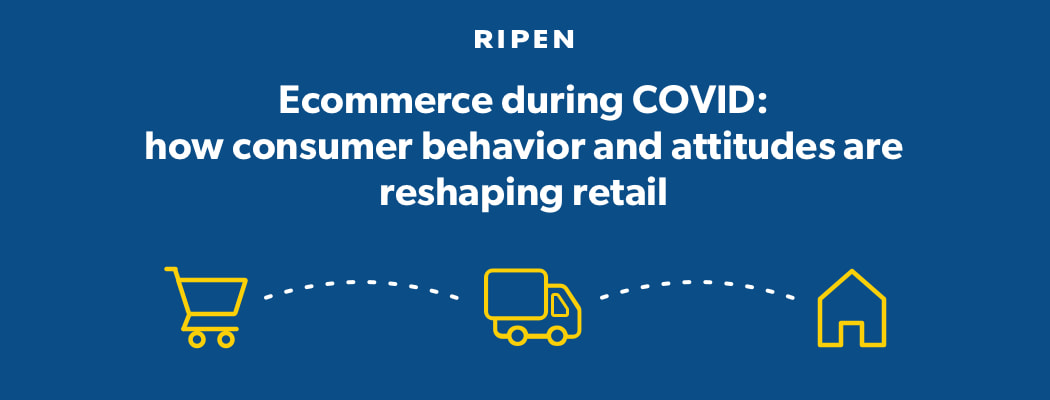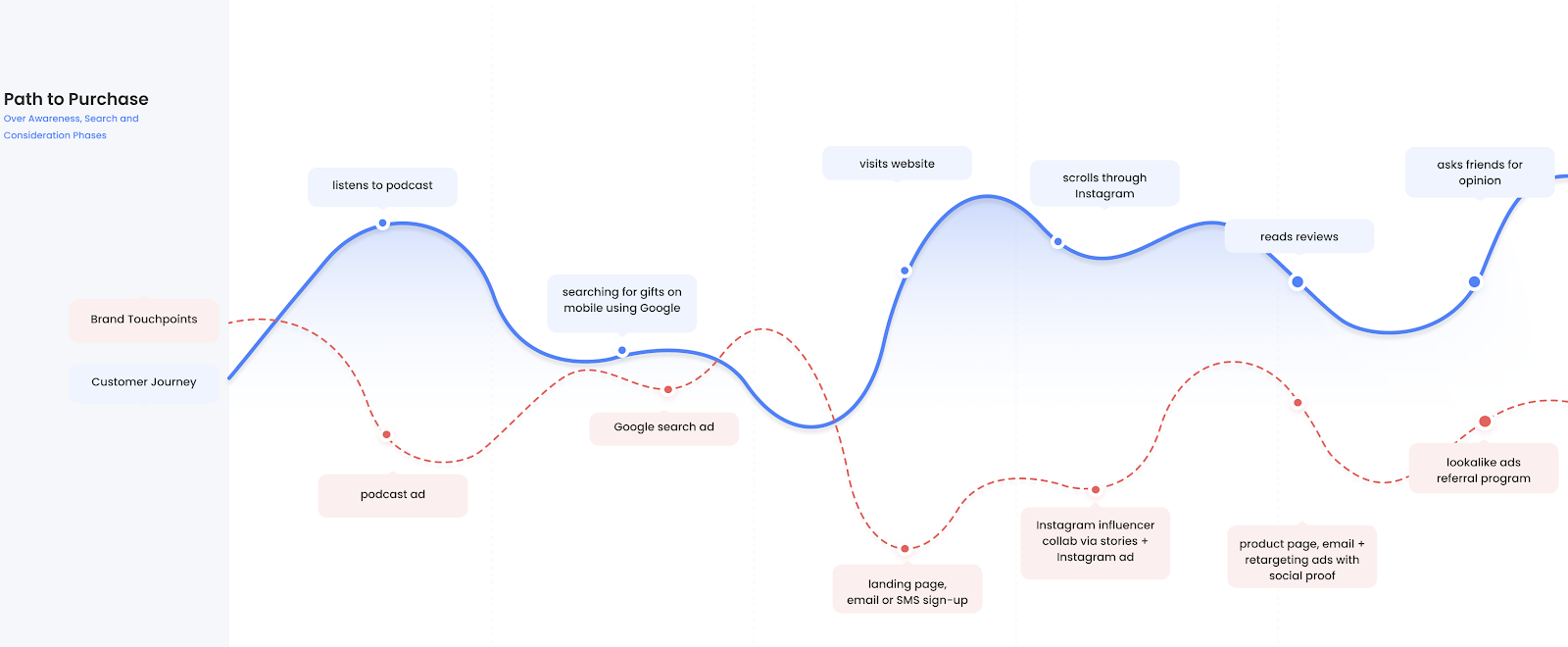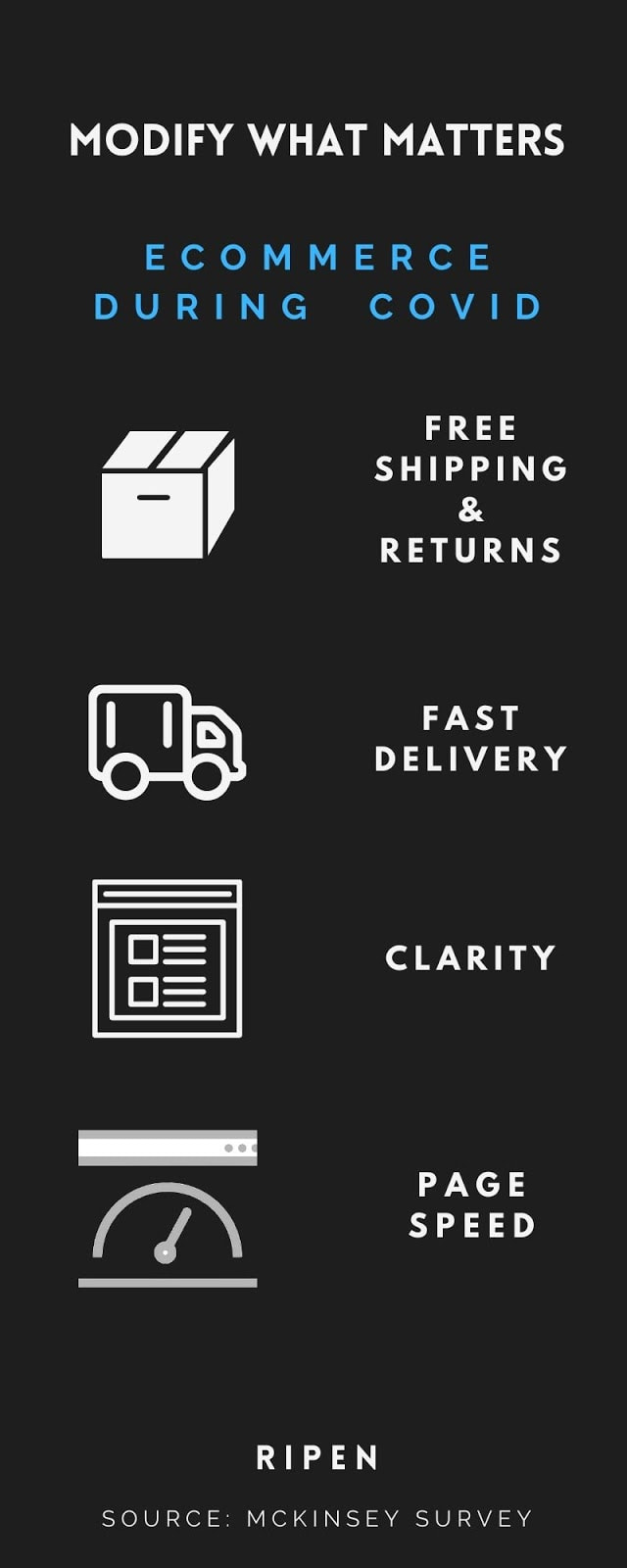Ecommerce during Covid: How Consumer Behavior and Attitudes are Reshaping Retail

The pandemic had a profound impact on our lives. For retailers and e-commerce brands, the shift in consumer shopping habits meant adapt or get left behind. Over the past four years, ecommerce saw a 14% compound annual growth rate (CAGR). Fast forward to March 2020, ecommerce grew by 25% within two weeks1. On the consumer side, e-commerce adoption rate has been accelerated by 10 years. While the massive increase in ecommerce sales sounds promising, it also means there is a massive drop in brick and mortar sales.
Physical stores are closing. In-store experiences are shrouded in fear. The dramatic and sudden shift to digital channels means rethinking the shopping experience. And the shopping experience begins long before shoppers arrive at your store, whether that’s online or offline.
As the buyer journey moves earlier and earlier, retailers and e-commerce brands have to follow. The first part of the customer shopping experience is discovery.
Discovery
Effective marketing is about the right message, right place, right time. Last year, 78% of U.S. holiday shoppers used three or more channels to do their holiday shopping, and 58% of shopper-reported purchases were made online2. This year, that number will be way higher. The path to purchase starts earlier than before, and people constantly seek information before they purchase. That means it’s vital for brands to be discoverable online at key stages of discovery.
Shape your strategy by understanding buyer behavior
Existing buying habits are being replaced as confined customers experiment with new approaches to purchasing. More consumers are shopping online for the first time for products they would normally buy in-store. Dive into your customers’ minds. Understand their needs, motivations, context and behavior. Think about how you can meet your customers where they are, in terms of both channel and intent.
Avoid cookie-cutter content
Content shouldn’t sound like you touting your product’s features on a megaphone. It should reflect how the needs of the customers are being met. There are different motivations behind different searches. For instance, when working with a cookware brand, we clearly saw the nuances behind the top search terms. Some people arrived at the site after typing ‘knives chefs use’, while others discovered the brand after searching ‘long-lasting kitchen knife’. While both are looking for knives, the first one values status and influence, while the second values practicality. With customer research and experimentation, find what values resonate with your target audience and develop content that speaks to them, whether it’s a search ad, landing page, blog content or social post.
Think omnichannel
Customers don’t discover brands and products on just one channel. Don’t limit your growth by limiting your online presence.

On Site

More people than ever before are now online. With this massive shift to online shopping, customers expect much more from an ecommerce experience. The importance of visual appeal doubled in a recent survey by McKinsey3. These are 4 other things that ranked high on US shoppers’ list.
Free Shipping and Returns
Most sites offer free shipping and returns. Since that is a baseline expectation at this point, seeing the opposite can hinder conversion. This is especially true today because of the influx of new online shoppers.
Fast Delivery
For better or for worse, Amazon spoiled the US with 2-day Prime shipping. Current conditions have affected the supply chain in ways that almost every brand or marketplace, including Amazon, suffered from delays. This makes fast delivery an even more prized perk - one that so many customers clearly value.
Clear Images and Descriptions
Without the ability of holding, feeling or trying a new product, it’s more important than ever to have clear visuals and descriptions. Many people abandon sites because they can’t find answers about products. The key is in the details. A customer should be able to see the product from various viewpoints as well as see the product in action, including lifestyle shots and video. Great product photography can mean the difference between purchase and site drop off. Clear copy should be detailed. Your copy should answer how a product works, what sets it apart as well as how it can benefit the consumer. Remember, your customer has millions of other options just a click away.
Quick Website Loading
Site speed should always be a priority. We’re seeing more and more bounce rates and drop-offs being attributed to slow loading. Check your speed and address the issues.

Behavior
Typically, habits change during a major life event or emotional upheaval. This includes buying habits. While these changes are predictable to an extent (marriage, divorce, pregnancy), the pandemic served as a catalyst for a major shift in consumer purchase behavior. In fact, according to a McKinsey report, 36% of consumers tried a new brand and 25% incorporated a private label brand. 73% intend to continue using these brands even when the pandemic subsides4. While availability, convenience and value are key, spending more time at home has allowed people to re-evaluate their own long-standing values. This has led to a shift in customer attitudes about brands and companies. A more purpose and values-driven customer has emerged. Almost one third of customers switched to a brand that showed empathy in response to major events. How a brand responds to big moments, both internally, towards their employees, and externally, to their audience, can make or break a brand. Pandemic changed the retail landscape for brands and retailers. Major events that increase fear or hope for the future often serve as pivotal experiences that motivate behavior change. Successful marketing should aim to fulfill people’s needs each step of the way. By focusing your strategy on satisfying people’s needs and adding value at each touchpoint, you have a better chance of influencing their decision and ultimately, converting them from audience to customer.
Successful marketing should aim to fulfill people’s needs each step of the way. By focusing your strategy on satisfying people’s needs and adding value at each touchpoint, you have a better chance of influencing their decision and ultimately, converting them from audience to customer.
Looking to optimize for growth and conversion? Whether you’re looking for guidance in strategy or execution at every level - including marketing, development, photo or video, Ripen can help. Let’s talk.
Let’s get started.
Find out how we can help your ecommerce strategy.
Get in touch
If you’re a rockstar with big ideas, join our team.




